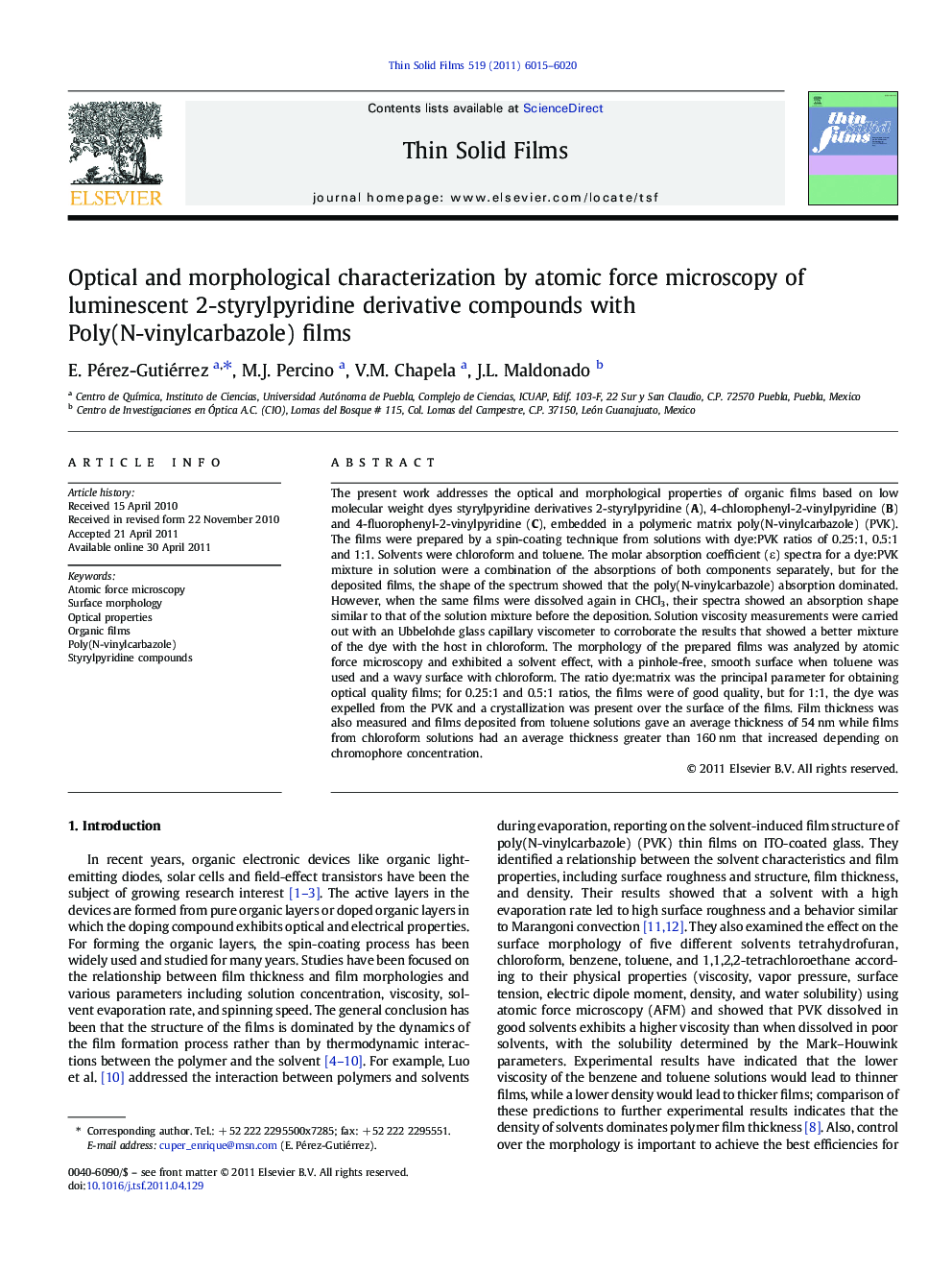| کد مقاله | کد نشریه | سال انتشار | مقاله انگلیسی | نسخه تمام متن |
|---|---|---|---|---|
| 1668569 | 1008871 | 2011 | 6 صفحه PDF | دانلود رایگان |

The present work addresses the optical and morphological properties of organic films based on low molecular weight dyes styrylpyridine derivatives 2-styrylpyridine (A), 4-chlorophenyl-2-vinylpyridine (B) and 4-fluorophenyl-2-vinylpyridine (C), embedded in a polymeric matrix poly(N-vinylcarbazole) (PVK). The films were prepared by a spin-coating technique from solutions with dye:PVK ratios of 0.25:1, 0.5:1 and 1:1. Solvents were chloroform and toluene. The molar absorption coefficient (ε) spectra for a dye:PVK mixture in solution were a combination of the absorptions of both components separately, but for the deposited films, the shape of the spectrum showed that the poly(N-vinylcarbazole) absorption dominated. However, when the same films were dissolved again in CHCl3, their spectra showed an absorption shape similar to that of the solution mixture before the deposition. Solution viscosity measurements were carried out with an Ubbelohde glass capillary viscometer to corroborate the results that showed a better mixture of the dye with the host in chloroform. The morphology of the prepared films was analyzed by atomic force microscopy and exhibited a solvent effect, with a pinhole-free, smooth surface when toluene was used and a wavy surface with chloroform. The ratio dye:matrix was the principal parameter for obtaining optical quality films; for 0.25:1 and 0.5:1 ratios, the films were of good quality, but for 1:1, the dye was expelled from the PVK and a crystallization was present over the surface of the films. Film thickness was also measured and films deposited from toluene solutions gave an average thickness of 54 nm while films from chloroform solutions had an average thickness greater than 160 nm that increased depending on chromophore concentration.
Journal: Thin Solid Films - Volume 519, Issue 18, 1 July 2011, Pages 6015–6020